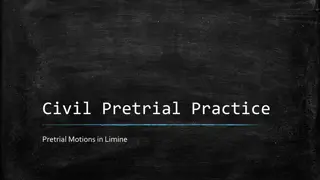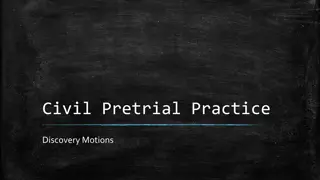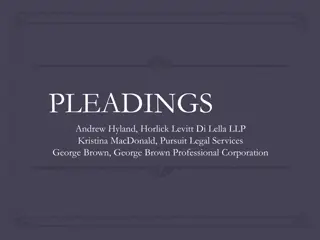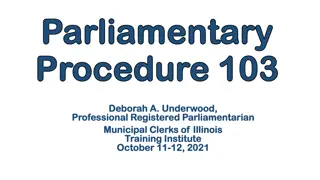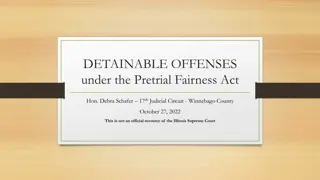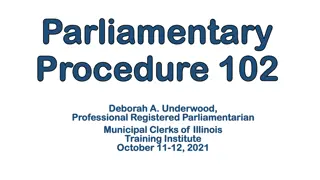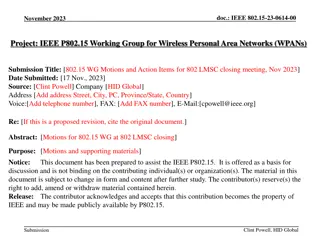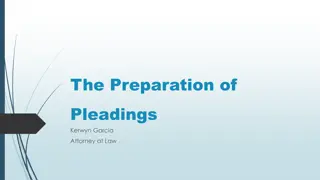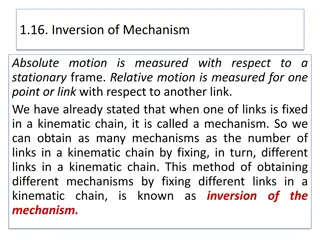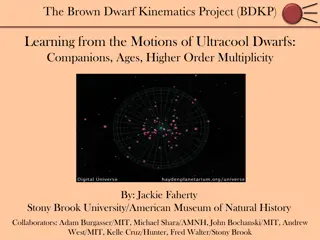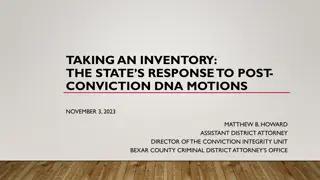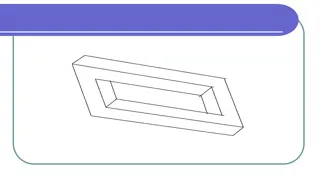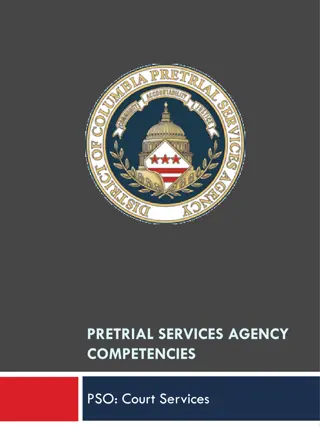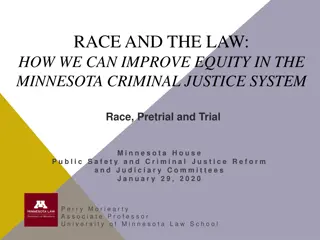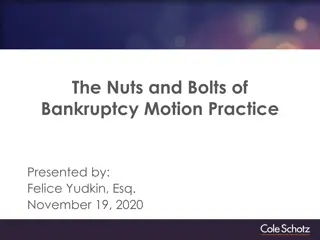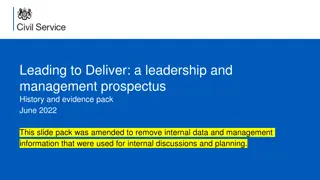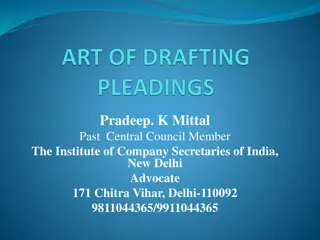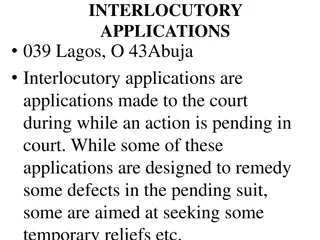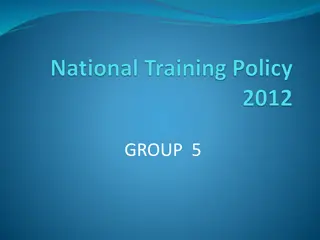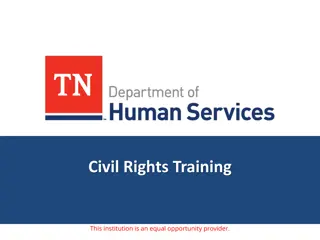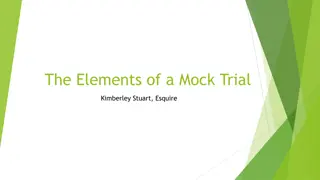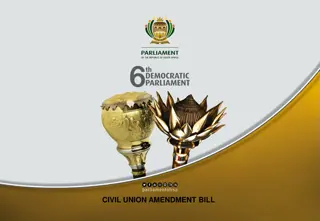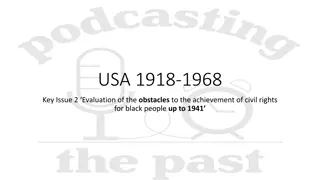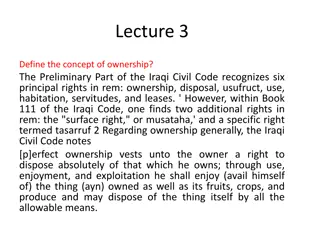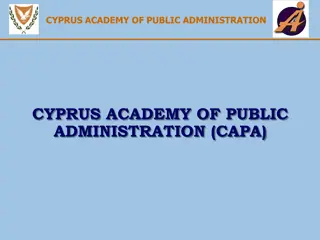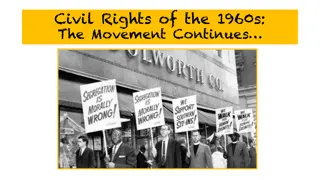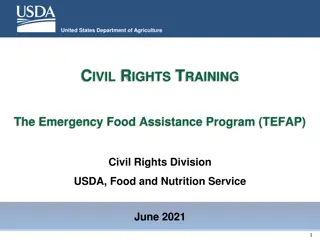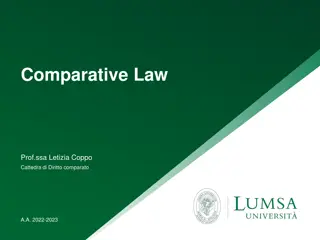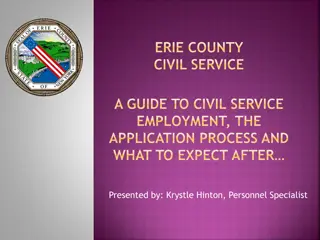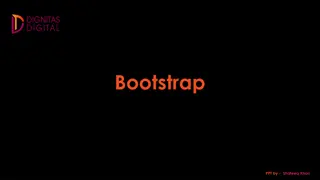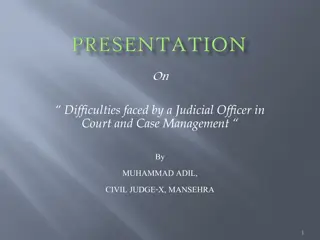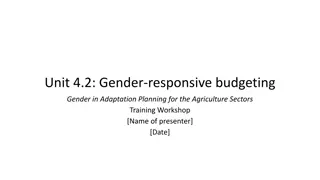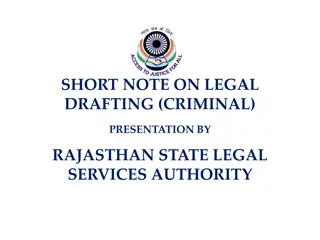Civil Pretrial Practice: Understanding Responsive Pleadings and Motions
Introduction to responding to a lawsuit in civil pretrial practice, covering the timing, deadlines for service of complaint, types of responses (answer, motion), default judgment consequences, and the importance of filing an answer to defend against allegations.
Download Presentation

Please find below an Image/Link to download the presentation.
The content on the website is provided AS IS for your information and personal use only. It may not be sold, licensed, or shared on other websites without obtaining consent from the author. Download presentation by click this link. If you encounter any issues during the download, it is possible that the publisher has removed the file from their server.
E N D
Presentation Transcript
Civil Pretrial Practice Responsive Pleadings and Motions
Introduction to Pleadings Responding to a Lawsuit Timing and Deadlines Timing for Service of Complaint The complaint must be served on all named defendants and proofs of service on those defendants must be filed with the court within 60 days after the filing of the complaint. CRC 3.110(b). The summons and complaint shall be served upon a defendant within three years after the action is commenced againstthedefendant. CCP 583.210(a). Timing for Response to Complaint For most types of lawsuits, the law requires you to file a written response with the court within 30 calendar days afteryouare served.CCP 412.20. If the 30th day falls on a weekend or court holiday, you have until the end of the next business day to file your response. CCP 10,12, 12(a). The parties may stipulate without leave of court to one 15-day extension beyond the 30-day time period prescribed for the response after service of the initial complaint.CRC3.110(d). When the complaint is amended to add a defendant, defendant must be served and proof of service must be filedwithin 30 days after the filing of the amended complaint.CRC3.110(b). the added ProofofService ofSummons Form
Introduction to Pleadings Responding to a Lawsuit Types of Responses 1. YoucanNOT respond 2. Youcanfile ananswer orageneral denial 3. Youcanfile amotion Motion toStrike Motion toQuash(cancel) service ofsummons Motion tostay Demurrer
Introduction to Pleadings Responding to a Lawsuit Default Judgment If youdo not file yourresponse in time, the other party may get a default judgment against you. Step 1: Request for Entry of Default If a responsive pleading is not served within the time limits specified in this rule and no extension of time has been granted, the plaintiff must file a request for entry of default within 10 days after the time for service has elapsed. The court may issue an order to show cause why sanctions should not be imposed if the plaintiff fails to timely file the request for the entry of default.CRC 3.110(g). Step 2: DefaultJudgment When a default is entered, the party who requested the entry of default must obtain a default judgment against the defaulting party within 45 days after the default was entered, unless the court has granted an extension of time. The court may issue an order to show cause why sanctions should not be imposed if that party fails to obtain entry of judgment against a defaulting party or to request an extension of time to apply for a default judgment within that time. This means that the other partywins the case, and the court will not consider anything you have to say. The other party can begin enforcing this judgment by garnishing your wages, placing liens on your property, or levying yourbank account.
Introduction to Pleadings Responding to a Lawsuit Answer An Answer is the most common way to respond to a lawsuit. The Answer is the defendant s opportunity to admit or deny the specific allegations brought against them in the complaint. Any statements in the complaint that are not denied will be taken astrue for the purposes ofthis case. In the Answer, all defenses to the allegations of the complaint must be raised, and allfacts essential tosupportingaparticulardefense mustbe included. In addition to asserting denials, an Answer may assert any new matters constituting a defense. CCP 431.30(b)(2). These are called Affirmative Defenses. If you do not raise a particular defense in your Answer, you will be prohibited from using or raising it later. See Ekstrom v. Marquesa at Monarch Beach Homeowners Ass'n, 168Cal.App. 4th 1111 (2008). Answer toComplaint Form
Introduction to Pleadings Responding to a Lawsuit General Denial A General Denial is a simple response to a lawsuit. In one sentence, the defendant denies every allegation in the complaint. The defendant may also state new matters as affirmative defenses tothe complaint. GeneralDenialsmaybe used if: 1. the complaint not verified; or 2. the complaint is verified, but is being heard in the limited jurisdiction civil court, unless the case involves a claim for more than $1000 that has been assigned to a third partyfor collection. If your case does not meet these guidelines, you will instead use your Answer to admit or deny eachallegation. Note: A complaint is considered verified if, in the complaint, the plaintiff swears under penalty of perjury that everything is true and correct. Sometimes the verification will be separate from the complaint;other times itwillbe includedatthe end oftheComplaintitself. GeneralDenialForm
Introduction to Pleadings Responding to a Lawsuit Motion to Quash Service of Summons A Motion to Quash Service of Summons attacks the method the plaintiff used to serve the summons andcomplaint. Commongrounds fora MotiontoQuashinclude: Defect in the method of serving the summons Defect in the summons itself Failure to name the defendant in the summons Failure to serve the summons altogether A Motion to Quash based on improper service usually will not dispose of a case permanently. If you win this motion, the plaintiff will probably have to serve you again and then you will have30more days to file aresponse. Ifyoulose,thecourt willgiveyouafewdays tofile yourresponse.
Introduction to Pleadings Responding to a Lawsuit Motion to Strike With a Motion to Strike, the defendant asks the court to eliminate specific parts of a pleading, includingphrasesor individualwords. In limited jurisdiction cases (under $25,000), parties may only use this motion to attack the prayer portion of the complaint, where theplaintiffstatestheamountof money or relief beingrequested. A Motion to Strike is similar to a Demurrer, in that it challenges defects in the complaint. However, the two pleadings challenge different types of defects. A Demurrer is used to challenge the legal sufficiency or clarity of the claims. A Motion to Strike is used to challenge improper or irrelevant information, or complaints not made in conformity with laws, rules, or court orders. Additionally, a Demurrer is used only to attack entire causes of action, while a Motion to Strike can be used to attack portionsof a cause of action. In an unlimited jurisdiction case (over $25,000), all or part of a pleading may be deleted on the various groundsset forth inCCP 436,including: Material or languagethatisirrelevant or improper Material, language,or entire pleadingsthat are notincompliancewith statelawsor courtorders If the Motion to Strike is sustained with leave to amend the complaint, the Plaintiff can file and serve anAmended Complaint, andthe case willproceed. If the Motionto Strike is denied, the defendant may fileanAnswer.
Introduction to Pleadings Responding to a Lawsuit Motion to Change Venue or Transfer A Motion to Change Venue or a Motion to Transfer asks the court to move the case to another court. This canbe a court in another county or a different type ofcourt. Groundsonwhich venue canbe changed include: Thecasewasfiled inthe wrongcourt Animpartialtrialcannotbe hadinthe originalcourt Witnessconvenienceandtheends ofjustice arepromotedby the transfer Nojudge ofthe court isqualified toact Thecaseinvolvesthe stateoracity,county,or localagency Changing venue does not terminate the case; it merely moves it to a differentcourt.
Introduction to Pleadings Responding to a Lawsuit Motion to Stay A motion to stay asks the court to put the case on hold for a while,so that something else can happen. For example, if you are in the middle of a bankruptcy case, you can file a motion to stay so that the case stops until your bankruptcy case is finalized.
Introduction to Pleadings Responding to a Lawsuit Cross-Complaints If you have a claim that arises out of the same transaction, occurrence, or series of events as the plaintiff s lawsuit, you must file aCross-Complaint withyourAnswer. If your Cross-Complaint is not filed before or at the time you file your Answer, you will need to file complicated paperwork to ask the judge for permission to file yourCross-Complaint. Cross-Complaint Form
Introduction to Pleadings Responding to a Lawsuit Demurrer: General A Demurrer is used to tell the court that the allegations in the complaint do not provide legally sufficient reason for the defendant to be sued. A Demurrer questions only the legal sufficiency of the allegations,not theirtruth or the plaintiff sabilityto prove them. If the party against whom a complaint or cross-complaint has been filed fails to object to the pleading, either by demurrer or answer, that party is deemed to have waived the objection unless it is an objection that the court has no jurisdiction of the subject of the cause of action alleged in the pleading or an objection that the pleading does not state facts sufficient to constitute a cause of action. CCP 430.80(a). Ademurrerto a cause of action may be filedwithout answeringother causes of action.CRC 3.1320(b). If the Demurrer is overruled, the Defendant must file an Answer to the original complaint within 10 daysCRC 3.1320(g),(j). If the Demurrer is sustained with leave to amend the complaint, the Plaintiff can correct the errors in the complaint,serve the Defendant with anAmendedComplaint, and the case willproceed. If the Demurrer issustained without leave to amend the complaint,the case isusually dismissed.
Introduction to Pleadings Responding to a Lawsuit Demurrer: Timing A person against whom a complaint or cross-complaint has been filed may, within 30 days after service of the complaint or cross-complaint, demur to the complaint or cross- complaint. CCP 430.40. Before filing a demurrer, the parties must meet and confer at least five (5) days before the responsive pleading is due for the purpose of determining whether an agreement can be reached that would resolve the objections to be raised in the demurrer. This same subsection also imposes a further meet and confer again with the party who filed the amendedpleadingbefore filingademurrer tothe amendedpleading.CCP 430.41(a). A party filing a demurrer must serve and file therewith a notice of hearing that must specify a hearing date in accordance with the provisions of Code of Civil Procedure section 1005and, if service is by electronic means, in accordance with the requirements of Code of Civil Procedure section1010.6(a)(4)andrule 2.251(h)(2).CRC3.1320(c). Must be served and filed 16 court days before the hearing date (+ 5 more calendar days if served by mail) (+2moreif servedbyfax,expressmail, orovernightdelivery).[CCP 1005]Note:CCP1013does notapply. Demurrers must be set for hearing not more than 35 days following the filing of the demurrer or on the first date available to the court thereafter. For good cause shown, the court may order the hearing held on an earlier or later day on notice prescribed by the court. CRC3.1320(d).
Introduction to Pleadings Responding to a Lawsuit Demurrer: Format & Substance All Motions Demurrer Specific A demurrer shall distinctly specify the grounds upon which any of the objections to the complaint, cross- complaint, or answer aretaken. CCP 430.60. The papers filed in support of a motion must consist of at least the following: 1. Anoticeof hearingonthe motion; 2. Themotion itself and Each ground of demurrer must be in a separate paragraph and must state whether it applies to the entire complaint, cross-complaint, or answer, or to specified causes of action or defenses.CRC3.1320(a). 3. A memorandum in support of the motion or demurrer. CRC 3.1112(a). Other papers may be filed in support of a motion, including declarations, exhibits,appendices,andother documentsor pleadings.CRC3.1112(b). A demurrer must state, on the first page immediately below the number of the case, the name of the party filing the demurrer and the name of the party whose pleading is thesubjectofthedemurrer.CRC3.1320(e). The papers filed under (a) and (b) may either be filed as separate documents or combined in one or more documents if the party filing a combined pleading specifies these items separately in the caption of the combinedpleading.CRC3.1112(c). The demurrer must include a declaration stating the parties met and conferred and were unable to reach an agreement, or the pleading party failed to respond to meetandconfer efforts. CCP 430.41(a)(3). Amotion must: 1. Identifythepartyor parties bringingthemotion; 2. Name thepartiestowhom itisaddressed; 3. Briefly statethe basisfor themotion andtherelief sought;and 4. If a pleading is challenged, state the specific portion challenged. CRC 3.1112(d)
Introduction to Pleadings Responding to a Lawsuit Demurrer: Legal Standard California Code of Civil Procedure 430.10, provides in pertinent part: The party against whom a complaint or cross-complaint has been filedmay object,bydemurrer or answer asprovidedinSection 430.30, tothepleadingonanyoneor more of thefollowing grounds: (a)The court has no jurisdiction of the subject of the causeof action alleged in the pleading. (b) The person who filed the pleading does not have the legal capacity to sue. (c) There is another action pending between the same parties on the samecause of action. (d) There is adefect or misjoinder of parties. (e) The pleading does not state facts sufficient to constitute acause of action. (f) The pleading is uncertain. Asusedin this subdivision, uncertain includes ambiguous andunintelligible. (g)In anaction founded upon acontract, it cannot be ascertained from the pleading whether the contract is written, is oral, or is implied by conduct. California CodeofCivilProcedure 430.30(a) provides inrelevant part: When any ground for objection to a complaint . . . appears on the face thereof , or from any matter of which the court is required to or maytakejudicialnotice,the objection onthat groundmay betakenbyademurrer tothe pleading. Ademurrer totheComplaintmaybetakentothewholeComplaintor anyof thecausesof action.CCP 430.50. A demurrer tests the legal sufficiency of the Complaint as it raises issues of law, not fact, regarding the form or content of the Complaint. CCP 589. For the purpose of testing the sufficiency of the cause of action, the demurrer admits the truth of all material facts properly pleaded (i.e., all ultimatefactsalleged, butnotcontentions,deductionsor conclusionsof fact or law). Serranov.Priest (1971) 5Cal.3d584, 591. A general demurrer may lie because the complaint alleges either too little, or too much, where the complaint is incomplete (plaintiffs have failed to allege some "ultimate fact" required to state a cause of action), or, it can be used where plaintiff has included allegations that clearly disclosesomedefense or bartorecovery. CrosstalkProductions,Inc.v.Jacobson(1998) 65Cal.App.4th631, 635.


